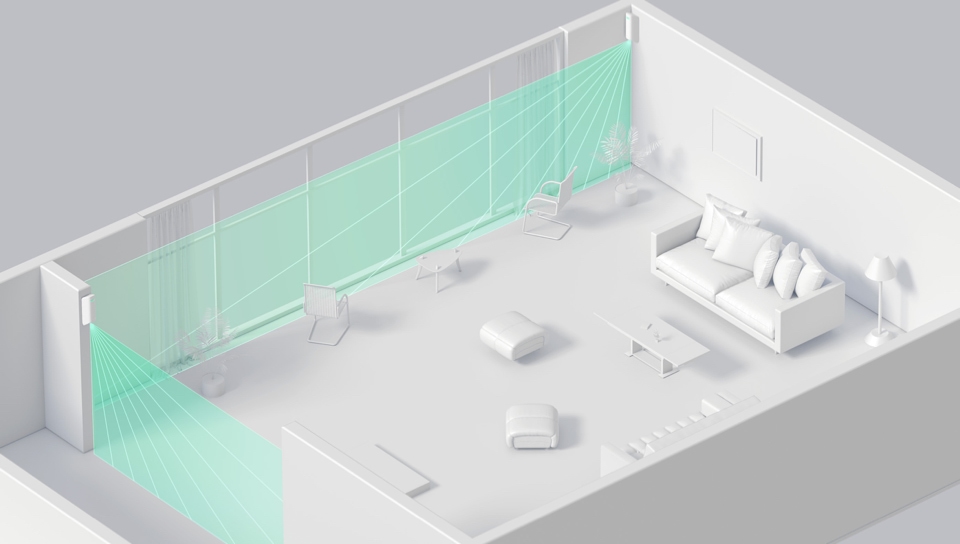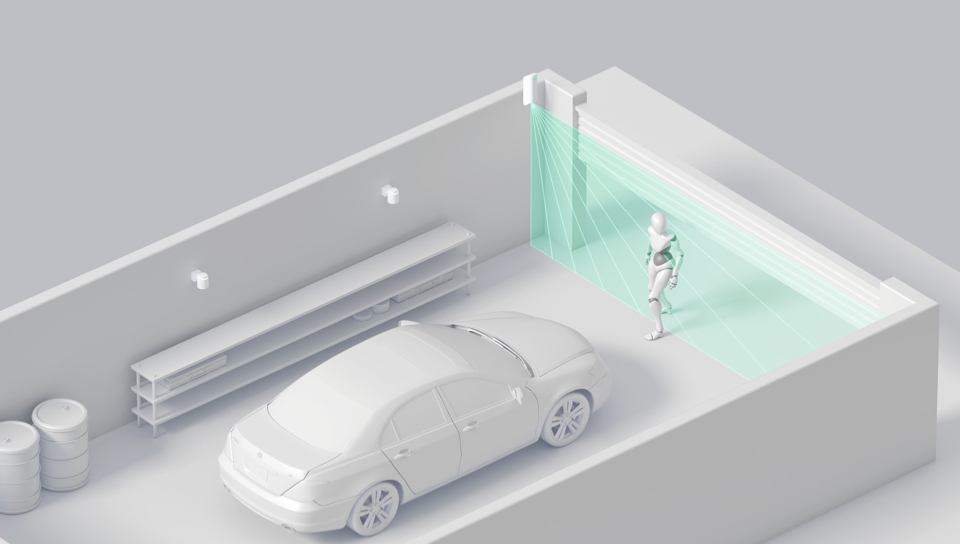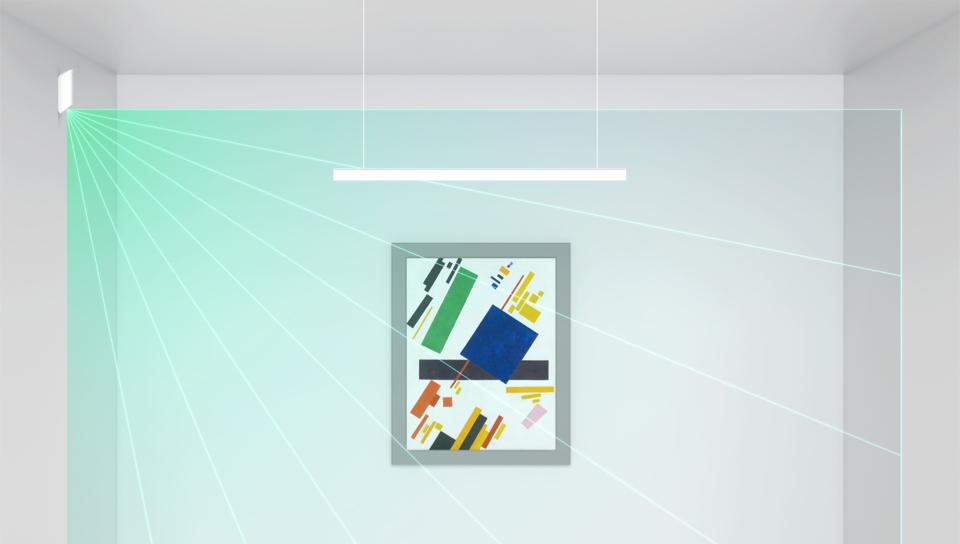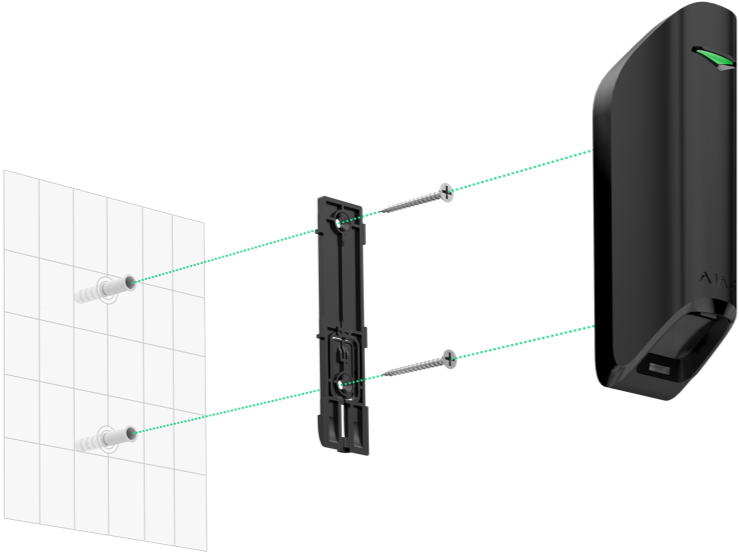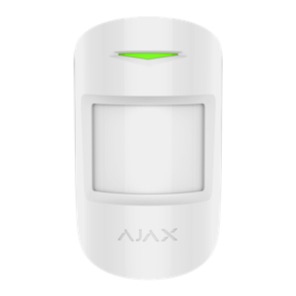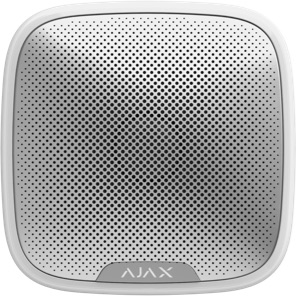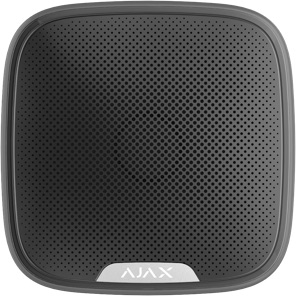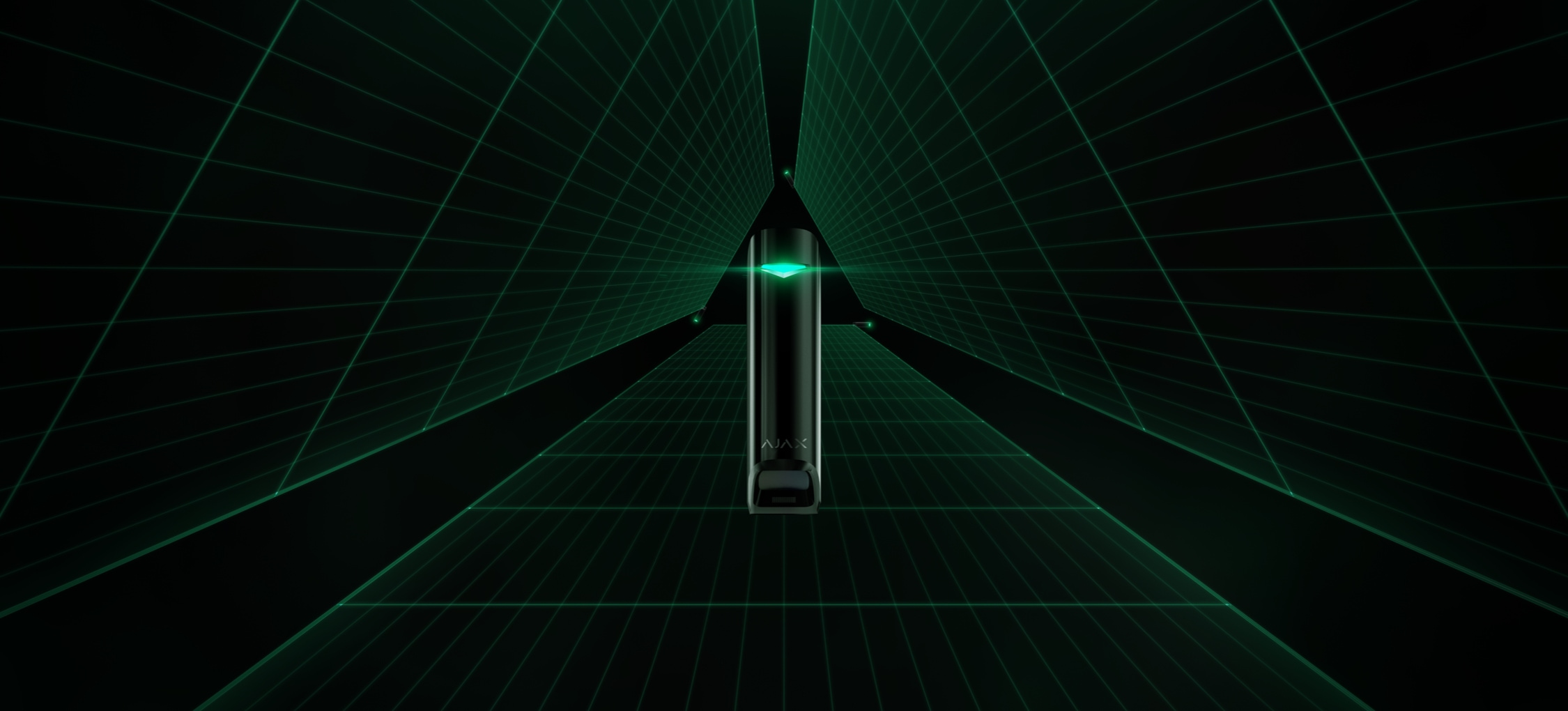
MotionProtect Curtain Jeweller
Narrow beam indoor motion detector. Protects windows, doors, and valuables
Detects motion with a range of up to 15 meters
Works up to 3 years on the pre-installed battery
Transmits alarms at a distance of up to 1,700 meters away from the hub
Reliable perimeter protection
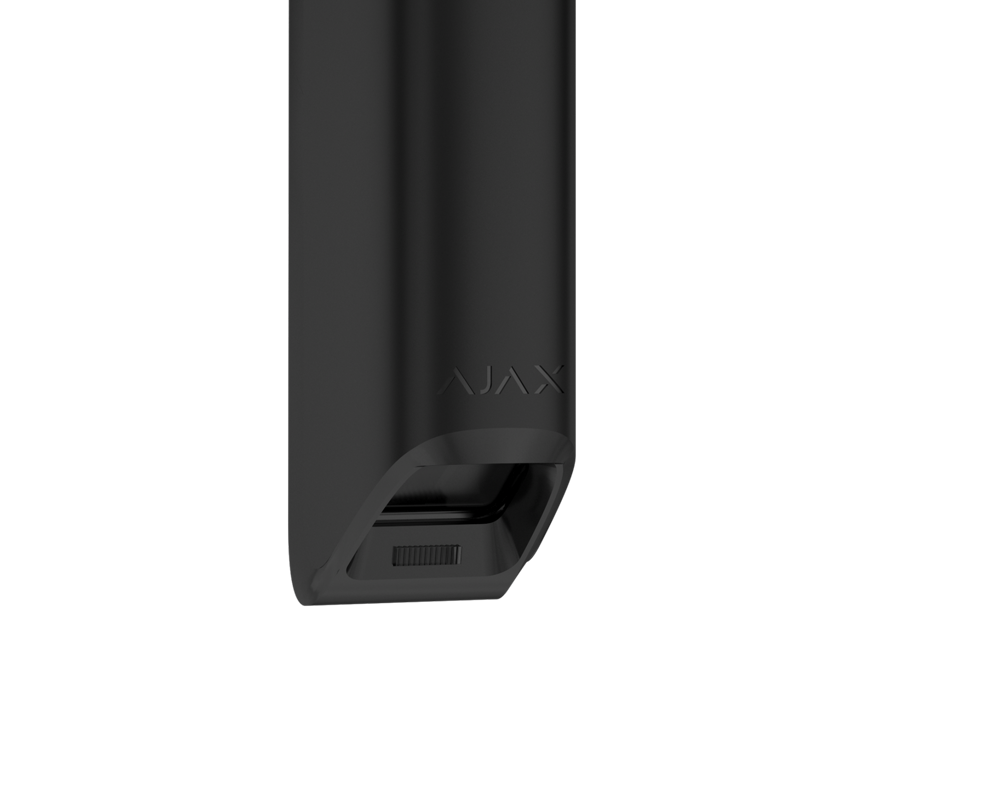
Proprietary optical technology
To create MotionProtect Curtain, we’ve developed an optical system of two infrared sensors and a multifaceted mirror. This system allows the detector to receive twice as much information about what is going on in the protected area and instantly react to human presence.
Rapid reaction to threats
Whether the intruder is running or sneaking — MotionProtect Curtain is always on duty. As soon as they enter its field of view, the detector analyzes signals from both PIR sensors and immediately sends an alert.
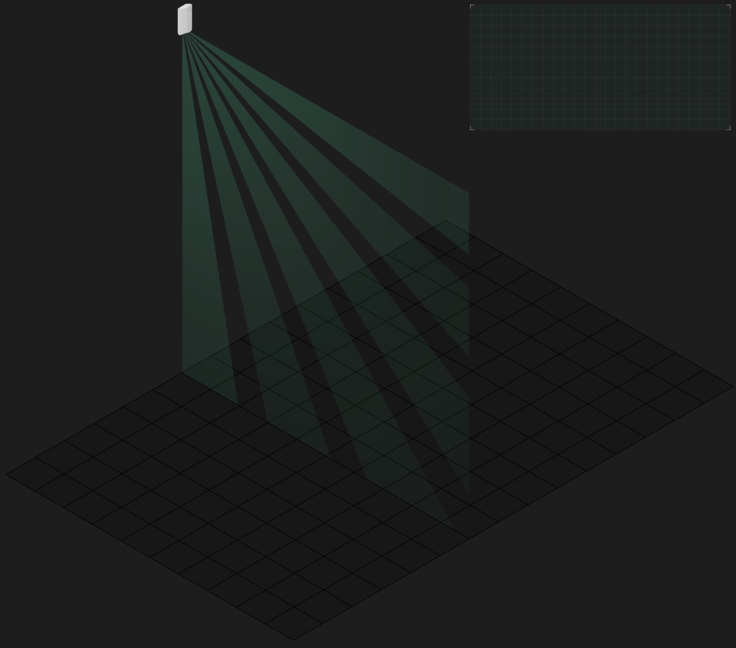


Reliable radio communication
MotionProtect Curtain connects to the hub through radio communication at a distance of up to 1,700 meters. Jeweller, the proprietary two-way communication protocol protects data transmissions with advanced encryption. In case of interference or jamming, Ajax security system switches the frequency and alerts you and your dedicated alarm response company.
2-minute set-up
MotionProtect Curtain connects to the security system via Ajax app: scan the QR code, add the detector to the room, and proceed to installation.
-
QR code for
simple connection -
SmartBracket mount for quick set up
-
Mobile app for configuring and testing
Choose the most suitable Ajax set in 2 minutes
Tell us what you need to protect and we will put together a set of detectors and devices for your premises.
Start
Security motion sensors for alarm
An electronic device that responds to the movement of a person and animals is called a motion sensor or a presence detector. When an object appears within the control radius of the sensor, the device reacts with several automated actions depending on the settings. The presence sensor acts as an electrical switch for a light or a siren and functions without mechanical action. Motion sensors are used in apartments, porches, residential buildings, shops, industrial areas and offices.Benefits of installing motion detectors indoors
Installing a response sensor allows users to:- Significantly reduce energy costs.
- Turn on the light without touching the switch, but only by reacting to movement.
- Extend the life of lighting fixtures, thanks to rational consumption.
- Turn on the security alarm system and scare off the intruder.
The principle of operation of motion sensors and equipment features
The LED Motion Detector detects an object in motion and sends an alarm to the relay. The circuit closes, and the light or siren turns on. The sensor of the device works at any time of the day. With a special toggle switch, the user can set the threshold for the motion sensor: from 3 to 2000 Lx. There are models of motion sensors triggered at specific values of electromagnetic field fluctuations. Turning on the alarm or lighting occurs with a predetermined shutter speed.Power type of motion sensors
Depending on the type of power supply, presence detectors are divided into:- Wired motion sensors — work from a network of 220 watts. Power for such devices is supplied through wires, so it is worth laying wired detectors into the interior at the design stage.
- Wireless motion detectors — run on batteries. Installation of this type of device occurs without harm to the repair.
Maximum device power
Before buying a motion sensor, users should determine the number of lighting fixtures to connect to the system and their power consumption. Based on these data, users need to calculate the connected power, ranging from 60 to 2200 watts.Types of presence detectors
The type of motion sensor is determined by the conditions of use, the principle of operation, the activation method, and the type of installation. Motion sensors according to operating conditions- Perimetric or street motion sensors are used most often for security alarm systems. The device is mounted along the perimeter of the protected area. Presence detectors detect the movement of objects within a given range.
- Peripheral presence detectors are mounted on the outer walls of buildings or fences. The device recognizes an object in motion if it violates the established boundaries of the motion sensor.
- Internal presence sensors are used in burglar alarm and lighting systems. The device protects against unauthorized entry into the premises. They have the same efficiency parameters as street motion detectors.
- Ultrasonic motion sensors check the area using ultrasound at a frequency not recognized by human hearing. When an object moves within the field of action of the presence detector, the frequency of the reflected signal changes, and the device turns on the light or alarm.
- Microwave motion sensors for alarms are triggered when the radiofrequency field changes. First, the device emits high-frequency radio waves. If an object in the protected area moves, the radio frequency field of the reflected waves changes, and the detector turns on the alarm or lighting.
- Infrared presence sensors react to the movement of living objects that radiate heat. In winter, outdoor infrared sensors may not work because the temperature of the clothes does not differ much from the ambient temperature.
- Active motion detectors for alarms are equipped with an emitter and a receiver that produce two or more infrared beams when working together. These beams continuously scan the space, and if an object in motion appears in the protected area, the beams are interrupted, and the device sends an alarm signal.
- Passive motion sensors, unlike the previous type, work without a transmitter. The device responds to the infrared radiation of an object in the field of view. The detectors do not emit radiation but only perceive the thermal rays of a living being. Devices are often used to guard objects and open doors in shops.
- Thermal motion sensors — devices respond to changes in the temperature of the scanned area. Suppose an animal or a person appears on the territory, the electrical potential of the sensor changes. As a result, a relay is activated, which triggers the switching on of the light or the burglar alarm response.
- Acoustic presence detectors are the kind of sensors that respond to air vibrations. The device analyzes the sound wave and compares it with silence parameters. The speed and amplitude of sound also matter. Further, the relay receives the command, resulting in the lighting or burglar alarm being turned on.
- Oscillatory presence sensors — the device responds to changes in the characteristics of the magnetic field in the controlled area. When a metal object moves, the oscillation amplitude of the generator changes. The generated eddy currents trigger the signal, activating the presence detector.
- Ceiling — motion detectors that are mounted on the ceiling or slabs. Such sensors are suitable for the maximum possible coverage of the controlled area. The range of this type of device is 360 degrees. Ceiling motion sensors are used for lighting control and in burglar alarms.
- Wall motion sensors — a device with a narrower viewing angle than the previous detector type. Wall-mounted motion sensors are mounted on vertical surfaces, often in flights of stairs. The range of the detector is most often eight meters. The viewing angle of the device is 100 degrees.
- Corner presence detectors — mounted in the corners of rooms. There are options for corner sensors for internal and external buildings when users need to control the entrance to the territory or part of the building.
- Multipurpose motion sensors — installation can be wall or ceiling. Most often, in the kit, there are fasteners for mounting on horizontal and vertical surfaces.



